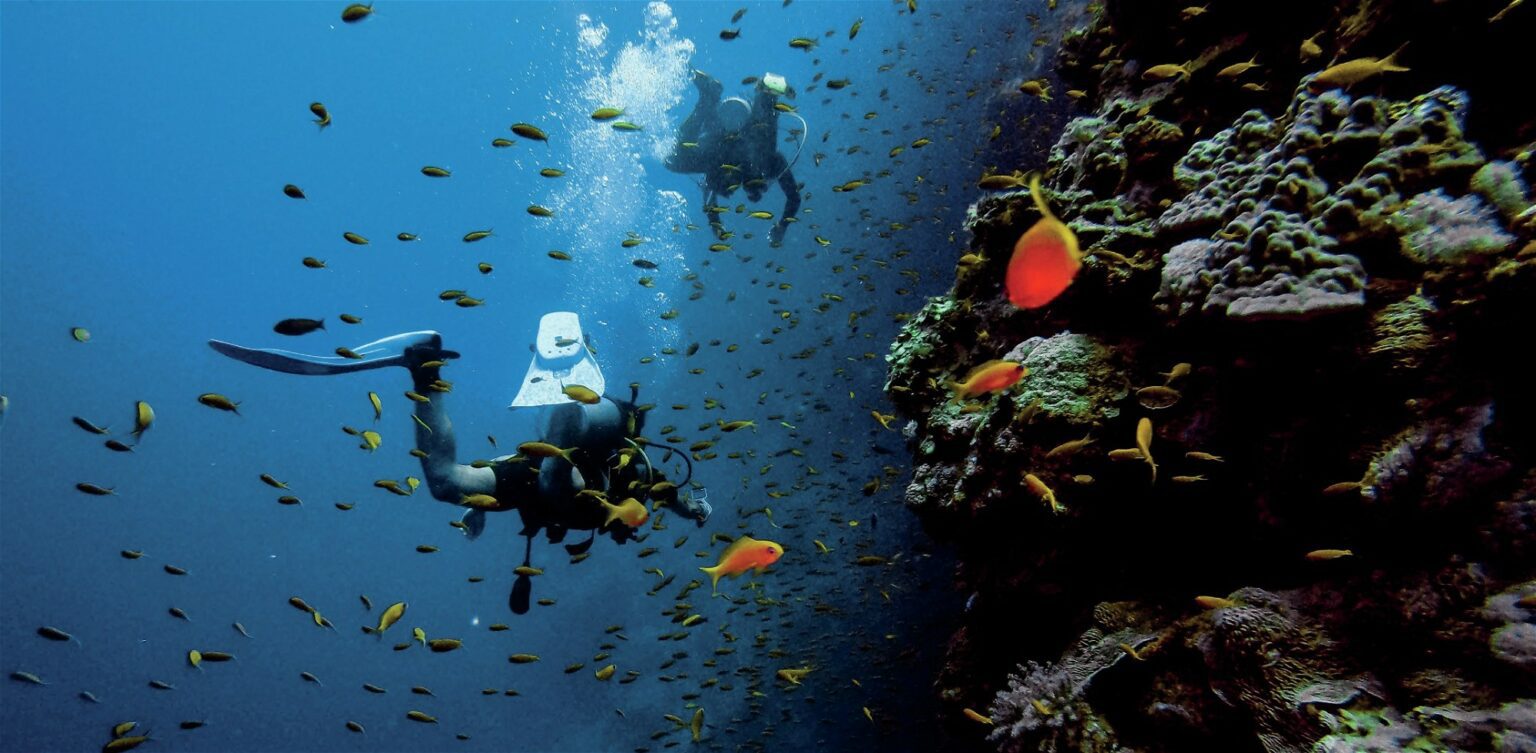Equalising Difficulty When Wearing a Hood
Q: If I am not wearing a hood, I have no problems equalising my ears. When I wear a hood, I always have great difficulty. Why is that?
A: When we pressurise the middle-ear space using a Valsalva manoeuvre or other equalisation techniques, the tympanic membrane (ear drum) bulges outward slightly. If the ear canal is uncovered and can transmit that pressure, the water in the ear canal moves easily in response. A hood that fits snugly against the outer ear can greatly restrict the movement of this water, hampering the diver’s ability to equalise.
One of the easiest remedies to this is to insert a finger under the hood near the ear, which will allow the water to move more easily. Another solution some divers choose to implement is to cut a hole from the inside of the hood, near the ear canal, through the inner lining and the neoprene but leaving the outer fabric or covering intact. The hole allows the water to move with little restriction.
Sea Creatures Growing Under The Skin
Q: I read that coral cannot grow under your skin, but can other sea creatures? I scraped against something while diving; the wound healed, but a couple of weeks later I noticed redness and small, painful nodules at the site of the scrape. My doctor gave me antibiotics and prednisone, which helped, but the symptoms returned after a week of treatment and now seem to be spreading. Could something be growing in me?
A: It is possible you have an infection caused by a bacterium called Mycobacterium marinum (M. marinum), which is a very slow-growing bacterium that requires incubation periods of two to three weeks. It is not always considered in differential diagnoses because it primarily affects those specifically exposed to aquatic environments. M. marinum infections may look like jellyfish stings at the outset, and they may get better with the use of steroids such as prednisone. Although steroids can relieve symptoms, they do not address the cause of the infection. As the infection slowly spreads, additional nodules can appear along lymphatic pathways.
Cultures for M. marinum are slightly different than standard wound cultures (e.g., requiring particular growth media), and the infection may be missed if the doctor isn’t looking for it. This bacterium is resistant to many antibiotics and generally requires specific and combination antimicrobial therapy that usually lasts for two to four months. This period includes continued antibiotics for one to two months after the infection disappears. Once treatment has begun, your primary care physician, a dermatologist or an infectious disease specialist can monitor it.

This article was originally published in Scuba Diver ANZ #57.
Subscribe digitally and read more great stories like this from anywhere in the world in a mobile-friendly format. Link to the article









I was frequently plagued with ear infections and equalisation problems over 50+ years of diving. A couple of my remedies were pretty straight forward. First was the idea mentioned of holes in the hood. Also helped when using an AGA full face as escaping air could vent if entered the hood. Second method was a double thin hood made by IST and used in conjunction with a special mask. The mask had ear protectors that kept the ears dry but had two air feeds from the mask. Again from IST. After a days diving, ears were washed with fresh water, NO soap ,dried and a product called OTOMISE used. Worked pretty well. No two people are the same, but my GP who is a Diving doc. reckoned it was OK for me. Hope this helps. Not sure if IST still going.